I caught up with Fred (below) at his UK importer Hallgarten & Novum’s annual portfolio tasting in London. There, we shared a glass of the 2017 Zero Manipulation Rhône-style red from grapes grown in the Tollini Vineyard in Mendocino, where the Petersons buy their old-vine Carignan and Zinfandel, planted by current owner Alvin Tollini’s grandfather and father, while he planted the Petite Sirah, Grenache, Barbera and Syrah that add complexity to Peterson Winery wines. The 2017 Zero Manipulation is a blend of 73% Carignan, 22% Grenache and 5% Syrah aged for 22 months in neutral oak barrels. It was bottled unfined and unfiltered.
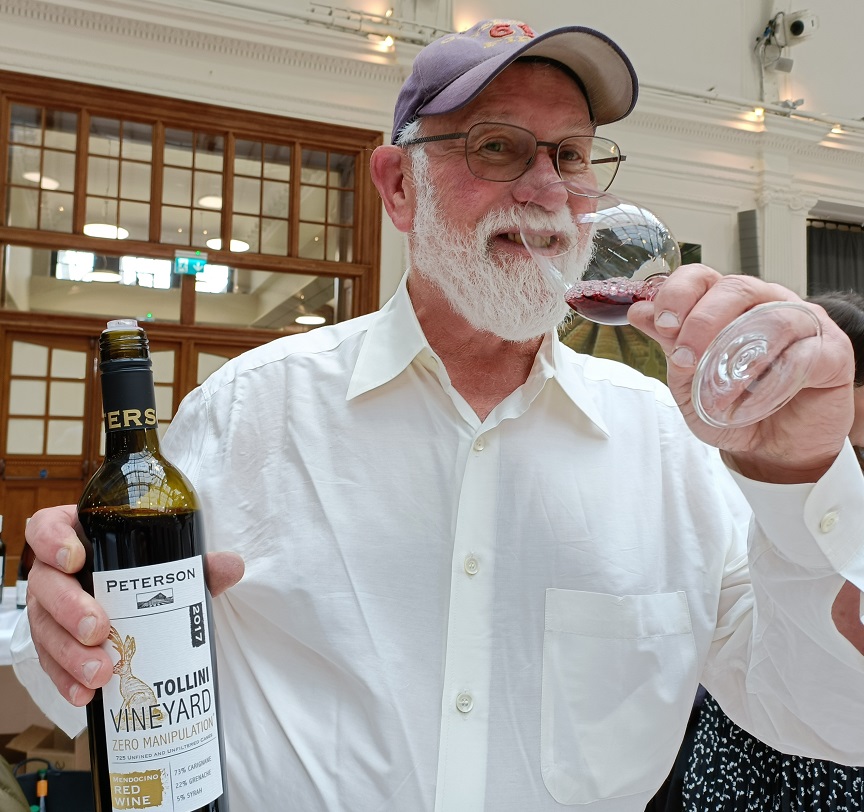
“The label preceded the wine,” Fred tells me when I ask about the name. “Zero Manipulation originated from our label designer. I went to him maybe 30 years ago and said, ‘Chris, every winery needs a cool t-shirt – can you design us a cool t-shirt? He goes, ‘Sure’. My only requirement was that it not be like any other winery’s t-shirt. He asked what makes Peterson winery unique, so I gave him the whole spiel: we don’t filter or fine our wines, we utilise very traditional techniques, we want the wine to taste of the vineyard... Chris stopped me and said, ‘I get it, what you’re describing is zero manipulation and Z-words are so visually powerful’. I said, ‘I like that’. Then he asked, ‘Have you ever seen a jackalope?’”
This is a mythical animal described as a jackrabbit with antelope horns.
“I said I’d seen them stuffed in cowboy bars in Wyoming – but what does that have to do with anything? And he said it would be cool to have an animal that’s obviously been f*cked with next to Zero. So, it became our t-shirt. People loved it.”
But how did the name and jackalope make it onto the label of the Carignan blend?
“We always made Carignan to blend with our Zin,” Fred continues. This was because his research – consuming “copious quantities” of Zin before he started growing and producing it in the Dry Creek Valley – revealed the Zinfandels that spoke to him tended to be field blends. “Zin is about fruit but if you add a little bit of spice, a little bit of earthiness, it’s a nice balance,” he elaborates. “So, one year (1998) this little ancient block of Carignan gave a pretty big crop and, after we blended what we needed, I had four barrels left. I could have sold it off in bulk and I’d have been lucky to get my grape cost back, but the wine was so damn good I bottled it thinking, ‘OK, we have this big festival weekend in Dry Creek, I’ll ask $10 a bottle’. So, I bottled it and forgot about the label. Three weeks before the festival, I thought, ‘Sh*t, I’ve got to get a label on this’, so I went to Chris and said, ‘I’ve got this really tasty Carignan blend, I need a label, can you help me?’ He said, ‘There’s not much time to get it designed and printed’. I apologised for my procrastination but then I begged: can’t you come up with something? He thought for 30 seconds and then said, ‘Why don’t we put the jackalope on it and call it Zero Manipulation?’
“I said that’s whacky, but I really didn’t have much choice, it’s a one-off, what the hell? Would you know it, people loved the wine and they loved the label.”
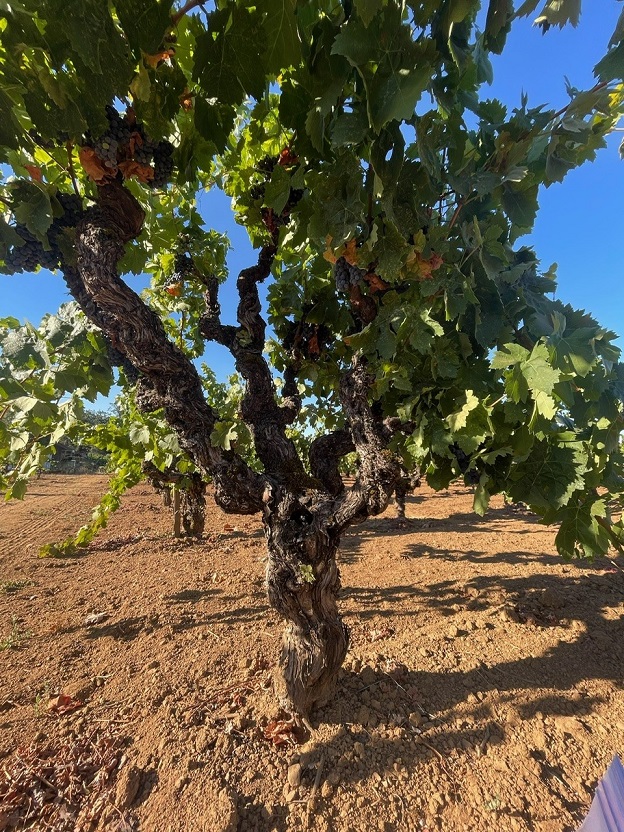
So, since 2000, the wine has been a staple of the winery – always a Carignan-dominant blend with the Carignan coming from the head-trained, dry-farmed vines (above) that Alvin’s grandfather planted after the end of Prohibition in 1933.
Fred describes it as “kind of a doughnut wine – to fill that hole we blend in varying percentages of Grenache and Syrah, and some years Petite Sirah”.
It’s usually around 75% Carignan. “Many years we could legally call it a varietal, but we choose not to.”
The current release, from the 2019 vintage, comprises 79% Carignan, 11% Petite Sirah and 10% Syrah.
The nose exudes red fruits with traces of baking spices, black pepper and a rustic minerality.
As I swirl the wine, Fred tells me he gets “a lot of grief” from fellow winemakers over his trademarking of the term ‘Zero Manipulation’. In frustration, they ask him: “Well, should I call myself 5% Manipulation?”
'It’s a discipline'But he says it’s not a dogma: “It’s not that our wines are better or have more spiritual purity because we don’t filter the wine – it’s a discipline. Technology is neither good nor bad; it’s the application. But humans being humans – when you can fall back on filtration or whatever to correct perceived flaws or to prevent whatever, there’s a tendency to do so.”
Jamie echoes this, describing Zero Manipulation as “the winemaking philosophy that we employ on all of our wines. Our definition of Zero Manipulation is using the gentlest winemaking techniques possible to maximise flavours, aromas and the original essence of the grapes from the given vineyard and vintage. The less you do in the course of a wine’s tenure in the cellar, the more of the grape’s, vineyard’s, and vintage’s essence you’ll have to bottle. Every time you do something to a wine, you take out a little of what you started with. We endeavour to share as much of the grapes’ true essence in every bottle; naturally, sustainably, and with a mind to being easy on your wallet.”
So, what do they do in the cellar?
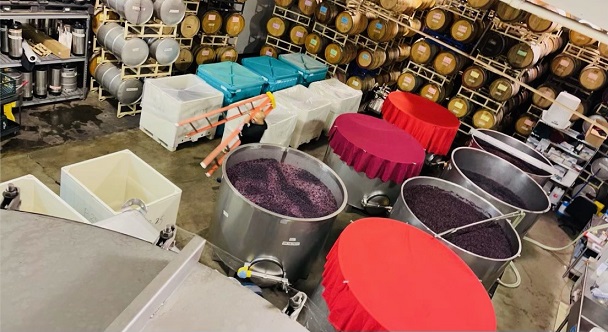
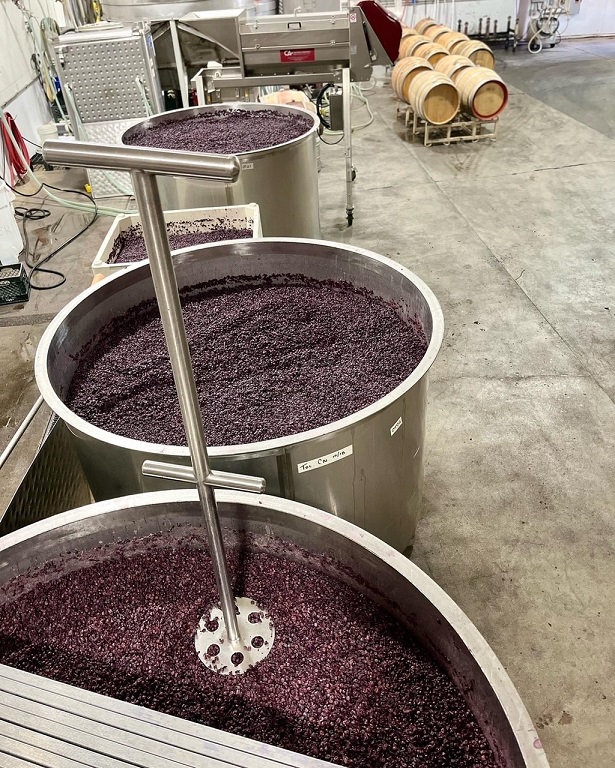
The handpicked fruit is destemmed, with a high percentage of whole berries going into open vats (1, 2.5 and 3.5 tons in size). “We do this for two reasons. One is practical: my original winery was a little red barn with no refrigeration,” Fred says.
When he started making Zinfandel, he falsely believed that any wine that was that easy to drink would be easy to grow and make. “I was disavowed of that reality quickly,” he says with a smile. “It’s very temperamental both in the field and in the winery. It can ferment really quickly, get too hot, so doing a high percentage of whole berries slows the fermentation right down; it releases the sugars more slowly, so you don’t get that temperature spike.
“The other thing it does is help the malolactic fermentation. I’m old enough to remember when we never worried about malolactic fermentation in red wines – it just happened, and then people started playing around and got concerned about it. Because we don’t filter, all our table wines have to be bone dry and the malolactic has to be complete.”
Before we get on to exactly how having a high percentage of whole berries helps with MLF, we backtrack to the start of fermentation and what type of yeasts are in play.
Fred says it’s usually native yeasts but that’s not a strict rule. “My son makes the determination when the grapes come in,” Fred explains.
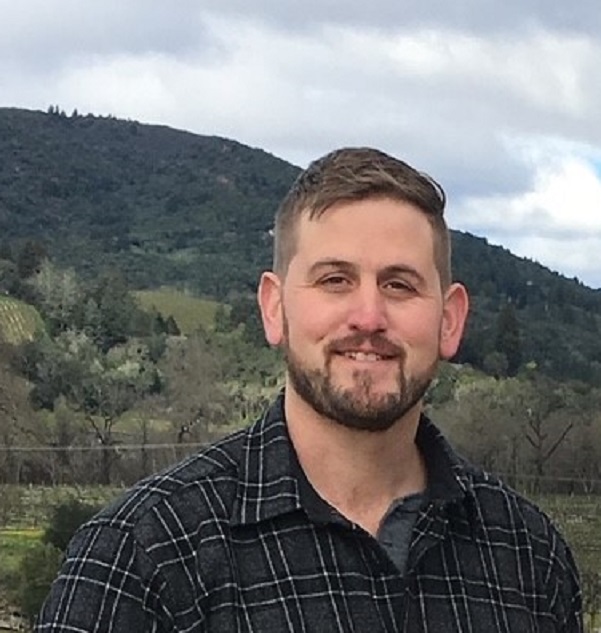
As the grapes are picked early in the morning, they come in cold and are left to soak in the vat while Jamie (above) analyses the sugar levels, pH and overall condition of the fruit. He monitors the situation for a few days “and either lets it go with native yeasts or, if he thinks the sugar levels are too high or there’s some other issue, then he’ll use a cultured strain to address the situation”.
Fred points out that “they’re all the same Saccharomyces cerevisiae anyway. The difference for me is the fermentation rate. When you pitch in a bunch of cultured yeasts and the fermentation screams through, you lose a lot of the complexity.”
Manual punchdowns are used for extraction until the fermentation rate slows down. When the wine is close to dry, it is drained off and pressed (which liberates a little more sugar), and put in a stainless-steel tank to “settle out the mud, the heavy stuff” before going to neutral barrels to complete the primary fermentation – which provides the heat for MLF “to go better; it also creates some byproducts – a little more glycerol, a little more mouthfeel”.
'Easy to use and cheap to operate'What I like about the wine is the wonderful depth of flavours, balance and structure in what is, essentially, an easy-sipping red that represents good value at $19-24. “Our goal in the blend is to create a wine that is a true bistro wine – tasty, food friendly, full of soul and almost refreshing, without ever becoming heavy,” says Jamie in the tasting notes.
Or, as the original t-shirt proclaimed, this wine is always “easy to use and cheap to operate”.
The freshness comes from a pH of 3.42 – with the Syrah picked about a month before the Carignan and Grenache.
“I hate flabby wines,” Fred states. “So, I want our wines to have good acidity. So many Californian wines sadly go for fruit and sacrifice acidity.”
He expands: “Acidity and mouthfeel. I want the wine to taste of fruit, but I want the overall sensation to both be full and refreshing.”
After malolactic, they rack the wine off the lees and add a little SO2.
All three varieties undergo similar vinifications. “We pretty much make all our wines the same in terms of techniques but once it’s pressed and settled then the barrels it goes into, how often it’s racked, how long it’s in barrel before bottling can vary.
“The winemaking is really simple, but it requires a lot of attention to detail. When my son took over from me as winemaker 20 years ago, people asked me what if he wanted to make wines for (Robert) Parker? I’d say, ‘Well, if that’s what he wanted to do, I’d wish him well and send him down the road’. But we share the same aesthetic. He’s much more into European wines than even I was, so that part is easy. We have other father-son issues,” he jokes, “but we want the wines to express place, we shepherd it through the process so it’s nil-manipulated to end with an expression of place.
“To do less is better. Less is more.
“To me, the difference between what we do is, if people like a wine I encourage them to buy more because next year isn’t going to be the same. It’s made the same, the consistency is the place, but you let the year express itself.
“By forgoing manipulative winemaking practices and additives, we create a wine much more natural than our elusive jackalope mascot.”
Peterson Winery
Peterson Winery, which is based in Healdsburg, California, began producing wines in 1987. The original facility was a red barn converted to a bonded winery, located in the picturesque Dry Creek Valley of Sonoma County.The goal was to showcase the distinctive expression of place from selected vineyards and blocks of the more than 270ha of vineyards that Fred was managing in the surrounding areas for his viticulture company.
What began as a personal quest for discovering the unique terroir of these vineyards evolved in 1992 when these small production wines started being offered for sale. The project grew and in 1995 Fred had the opportunity to own the winery and make it his focus.
After his son Jamie joined the business as assistant winemaker in 2002, they moved to a larger production facility and tasting room. A few years later, Jamie was given full responsibility for winemaking while Fred focused on the grape-growing and regenerative farming on their key estate vineyard on top of Bradford Mountain. The 6.5ha dry-farmed vineyard, planted in the 1980s, is also planted with cover crops such as peas, beans, vetch, oats, and barley – which are incorporated in the soil with the organic compost.
It’s hardly zero manipulation but that’s the goal that keeps them focused on producing great wines that do justice to the grape-growers who stuck with varieties like Carignan when the demand was for Zinfandel.
Zero Manipulation 2017
Composition: 100% Tollini VineyardVarietal breakdown and harvest dates: 73% Carignan (Oct 11), 22% Grenache (Oct 2), 5% Syrah (Sept 7)
Appellation: Redwood Valley, Mendocino County
Alcohol: 14.6%
pH: 3.42
TA: 0.64g/100ml
Barrel ageing: 22 months
Cooperage: 100% neutral oak barrels
Bottling date: July 3, 2019 (unfined and unfiltered)
Closure type: Screwcap with Janson Capsule and Saranex liner


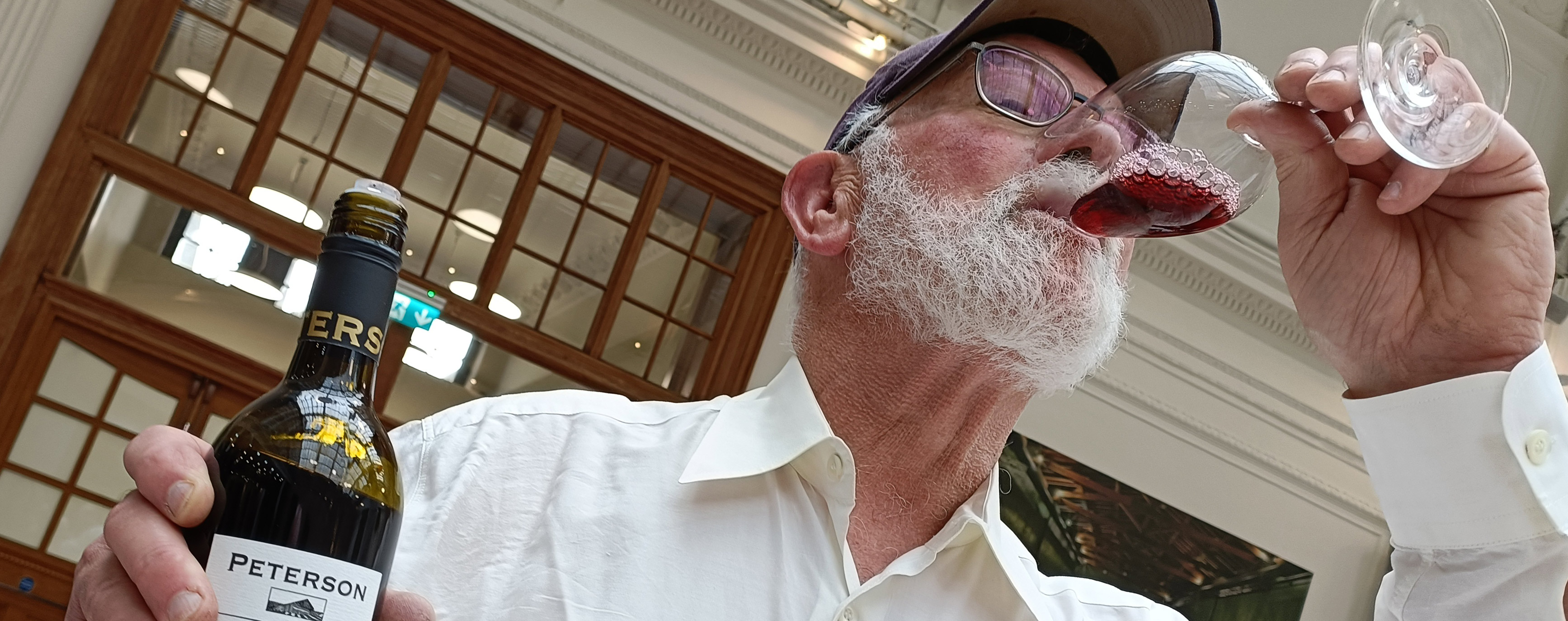










.png)






